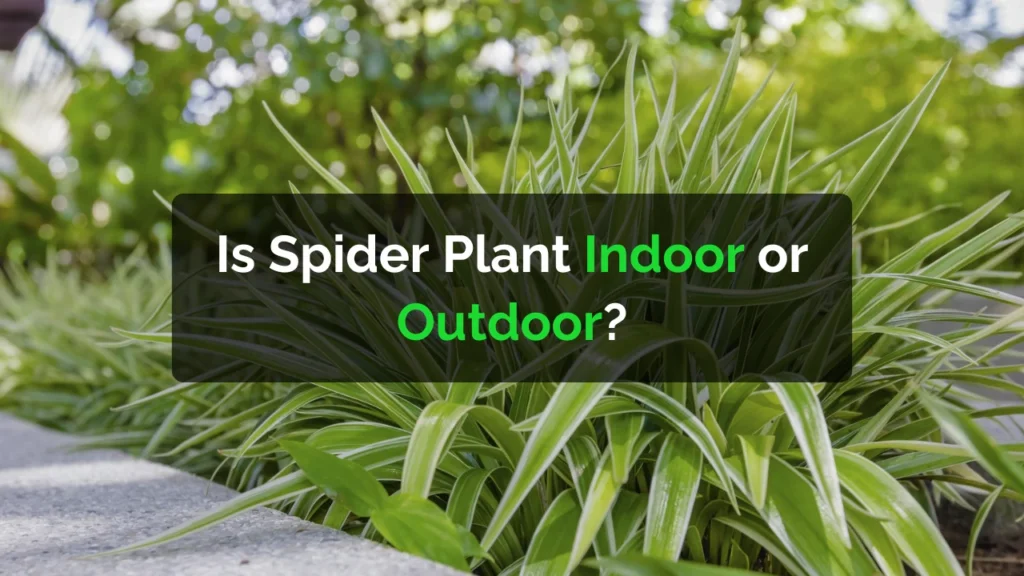Spider plants are among the most adaptable houseplants you can grow. They can thrive both indoors and outdoors, depending on the climate and care they receive. However, they are most commonly grown indoors because they prefer stable temperatures, indirect light, and controlled conditions.
Let’s explore when and where spider plants grow best and how you can decide the right environment for your plant.
Growing Spider Plants Indoors
Spider plants are perfect indoor companions. They flourish in moderate to bright indirect sunlight and tolerate lower light levels better than many other houseplants. Indoors, they are safe from harsh weather, pests, and temperature extremes, making them easier to maintain.
Keep your indoor spider plant near a window where it receives filtered light. Avoid direct sunlight as it can scorch the leaves. These plants enjoy a comfortable room temperature between 18°C to 27°C. Regular watering and occasional misting will keep their leaves lush and green.
Indoor spider plants also act as natural air purifiers, improving indoor air quality by removing toxins like formaldehyde and xylene.
Growing Spider Plants Outdoors
Spider plants can grow beautifully outdoors in the right conditions. They prefer mild, frost-free climates and thrive in shaded or partially shaded areas. Too much direct sun can cause leaf burn, while too little light can slow their growth.
If you live in a warm climate, you can grow spider plants outdoors in containers, hanging baskets, or garden beds. Make sure the soil is well-draining, as spider plants dislike sitting in waterlogged soil. During cold seasons, it’s best to move them indoors or provide protection, as they are not frost-tolerant.
Ideal Conditions for Both Indoor and Outdoor Growth
| Condition | Ideal Range |
|---|---|
| Light | Bright, indirect sunlight |
| Temperature | 18°C to 27°C (indoors) |
| Watering | Keep soil slightly moist, not soggy |
| Soil Type | Well-draining potting mix |
| Humidity | Moderate to high humidity |
Spider plants adapt well as long as these basic needs are met. Whether indoors or outdoors, they grow quickly and produce offshoots known as “spiderettes,” which can be easily propagated.
Common Mistakes to Avoid
- Overwatering: Leads to root rot and yellowing leaves.
- Too Much Sunlight: Causes brown leaf tips and burns.
- Neglecting Pruning: Regular trimming keeps the plant healthy and encourages new growth.
- Ignoring Temperature Drops: Avoid placing spider plants outdoors during winter.
Final Thoughts
Spider plants can grow both indoors and outdoors, but they truly shine as indoor plants due to their adaptability and low maintenance needs. They add a fresh, natural touch to homes and offices while helping to purify the air. If you live in a warm region, you can enjoy them outdoors too, as long as you protect them from harsh sunlight and frost.
FAQs
Can spider plants survive outside in winter?
No, spider plants cannot survive frost or freezing temperatures. Bring them indoors during cold months to keep them healthy.
Do spider plants need direct sunlight?
No, spider plants prefer bright but indirect light. Direct sunlight can cause their leaves to scorch.
How often should I water a spider plant?
Water once the top inch of soil feels dry. Overwatering can damage the roots.
Can spider plants be grown in hanging baskets outdoors?
Yes, they look stunning in hanging baskets as long as they receive filtered light and protection from strong winds or direct sun.
Are spider plants good indoor plants?
Absolutely. They are easy to care for, improve air quality, and grow well in various indoor environments.





